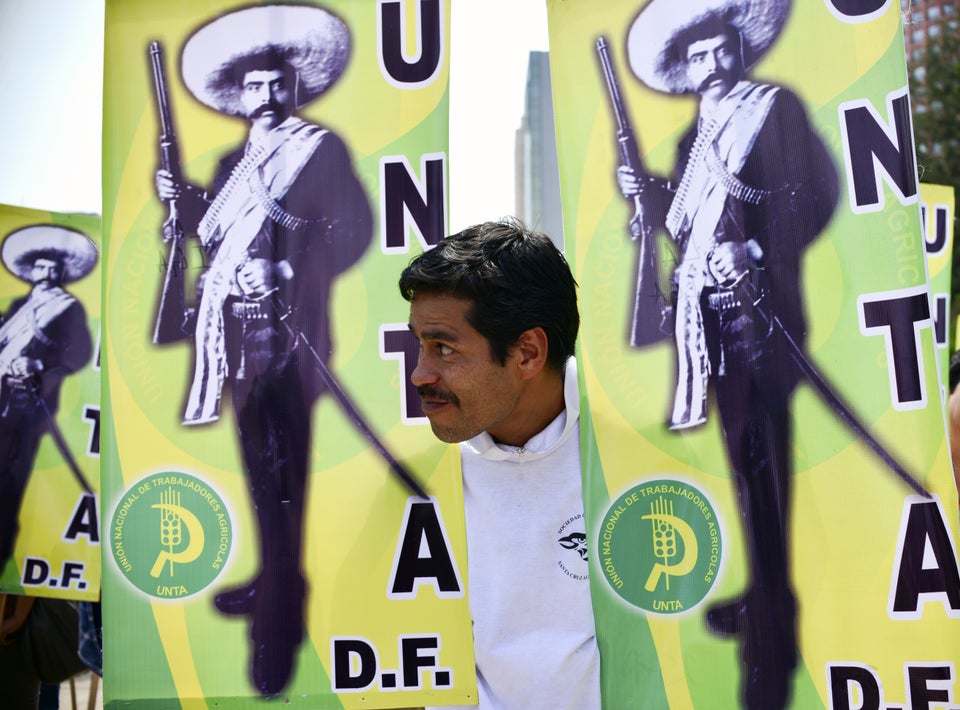
Lighter-skinned Latinos are more likely to vote Republican, according to polling data analyzed by the Washington Post.
The data highlights rarely recognized racial divisions within the Latino community that have perplexed the U.S. Census Bureau and tripped up mass media. But don’t expect it to change too much about the way you understand the Latino vote.
Writing for The Washington Post’s Monkey Cage blog on Wednesday, professor Spencer Piston analyzed a sample of Latino citizens interviewed for the 2012 American National Election Studies. Interviewers measured the respondents' skin color.
The data show that Hispanics with darker skin were far more likely to vote Democrat than those with lighter skin. In the most dramatic of four cases presented, the analysis estimated that Latinos with the darkest skin showed a 98 percent chance of voting Democrat, while those with the lightest skin showed a 43 percent chance.
Despite the variation, Latinos of all skin tones tended to lean more strongly toward identifying as Democrats and voting Democrat in national elections, with the exception of the 2012 U.S. Senate election.
The data isn’t too surprising when considering that non-Hispanic whites lean more conservative than people of color. Given that Latinos live in the U.S. and adapt to national ideas about race, one might expect Hispanic voter preferences to reflect, while not necessarily replicate, broader patterns.
The predictions Piston makes based on the data, however, are questionable. He writes that the analysis should make us rethink projections suggesting that the growth of the Latino electorate will dilute the Republican vote, which are based on the premise that Latinos tend to vote Democrat.
But the projections that Piston disputes measure Latino voters in the aggregate. Unless we expect the number of white Latinos to grow much faster than Latinos of color, or Republicans to get way better at selectively targeting them, there’s no reason to think those projections won’t pan out just because we now have data showing whiter Latinos vote for Democrats in fewer numbers. That information doesn’t change anything, it merely illuminates a phenomenon that was already there.
The crux of Piston’s argument is that white Latinos start to identify more strongly as conservatives over time. But he doesn’t explain why the trend would accelerate. Nevertheless, Piston concludes with these words:
The coming decades may therefore be characterized by a different kind of partisan polarization than we normally think about: polarization by skin tone. This would give new meaning to the phrase “divided by color,” and if it is indeed what the future holds, it is not at all clear that Republicans are the party with a “race problem.”
Maybe. But there’s several reasons to question the prediction that whiter Latinos will become more Republican with time solely because of their racial identification.
As a multiracial ethnicity, Latinos view race differently than non-Latinos because so many Hispanics come from a mixed-race background. While racial division and discrimination are undoubtedly part of the Latino experience, Latinos have less fixed ideas about race than non-Latino Americans. Our communities, our social groups and our families are racially mixed in a way that doesn’t exist to the same degree among non-Hispanic white and black Americans.
That heritage makes it unlikely that light skin would act as strongly as a predictor of political affiliation in the Latino community as it does among non-Hispanic whites. The light-skinned Latino that Piston assumes will be more likely to vote Republican because he or she hasn’t experienced racial discrimination is likely surrounded by darker-skinned people at home, work, school and church who have. As friends and family, those people are likely to identify with one another, even if their personal experience differs.
Latinos also face some forms of discrimination as a group. Resentment against the Spanish language, white American assumptions of cultural superiority and, most prominently, anti-immigrant sentiment, affects Latinos as a group. Because conservatives have embraced these nativist views with more enthusiasm than liberals, expect Republicans to repel Latinos of all races until those ideas are abandoned.
The major exception is South Florida, where a largely white and historically conservative Cuban-America community, by sheer force of numbers, has made it culturally unacceptable and politically unviable for local Republicans to mount English-only campaigns or state crackdowns on undocumented immigrants.
It is, of course, possible that Piston is right and lighter-skinned Latinos will move en masse toward the Republican Party in the future. And he points out that that political affiliations are less fixed among Latinos than non-Hispanic whites and blacks. But if that were going to happen, why hasn't it happened yet? Light-skinned Latinos today do in fact identify more strongly as Democrats than non-Hispanic whites in the analysis that Piston presents.

